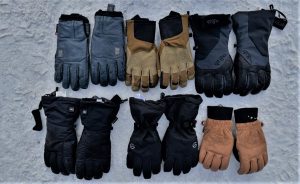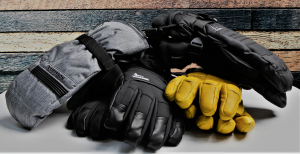Skiing is a fun winter activity, but it can be uncomfortable if you have cold, wet hands. Waterproof ski gloves are an essential part of any skiing outfit, as they keep your hands warm and dry while you ski.
Even the best waterproof ski gloves can lose their effectiveness over time. In this article, I will discuss the best methods to waterproof ski gloves. So let’s start!
What are Waterproof Ski Gloves?

Waterproof ski gloves are specially designed gloves that are made to keep your hands warm and dry while you ski or engage in any other winter sports activity.
These gloves are made from materials that are resistant to water and moisture, such as Gore-Tex or other synthetic fabrics.
The insulation in these gloves helps to keep your hands warm, while the waterproofing layer prevents any water or snow from seeping inside the glove.
Why are Waterproof Ski Gloves Important?
Skiing and snowboarding require a lot of movement, and you can quickly work up a sweat. Sweat can make your hands cold and wet, which can lead to frostbite or hypothermia in extreme cases.
Waterproof ski gloves prevent this by keeping your hands dry and regulating your body temperature, so you can ski for hours without any discomfort. Additionally, waterproof ski gloves protect your hands from the cold wind and prevent snow from melting into the glove and soaking your hands.
Ski gloves are designed to keep your hands warm, but they can still get wet from snow, rain, or sweat. Wet gloves can quickly become uncomfortable, making it difficult to grip your ski poles or perform any other tasks while skiing.
Waterproof ski gloves prevent this by keeping your hands dry, which also helps to regulate your body temperature and prevent hypothermia.
However, the best waterproof gloves for snowboarding are the Gloves, These gloves offer excellent warmth, durability, and waterproofing for a comfortable snowboarding experience.
Best Methods to Waterproof Ski Gloves

1. Use a Waterproofing Spray
One of the easiest and most effective ways to waterproof ski gloves is to use a waterproofing spray. These sprays contain chemicals that repel water, creating a barrier between the gloves and moisture.
2. Apply a Beeswax Treatment
Beeswax is a natural waterproofing agent that can be applied to ski gloves to create a protective layer.
3. Use a Waterproofing Wax
Waterproofing wax is a specialized product designed specifically for outdoor gear like ski gloves. It is a blend of natural waxes that can be applied to the gloves to create a waterproof barrier.
For all the methods, follow these steps:
- Clean your gloves with a damp cloth to remove any dirt or debris.
- Rub the waterproofing wax onto the gloves, focusing on the seams and areas that are most likely to come into contact with moisture.
- Use a hairdryer on low heat to melt the wax, spreading it evenly across the gloves.
- Allow the gloves to cool and dry completely before using them.
Factors For Choosing the Right Waterproof Ski Gloves
There are several factors to consider when choosing the right waterproof ski gloves for you:
1. Material
The material of the gloves is a crucial factor in their performance. Synthetic materials like Gore-Tex are ideal as they are lightweight, breathable, and waterproof. Avoid gloves made from natural materials like cotton or wool, as they are not waterproof.
2. Insulation
The insulation of the gloves is essential to keep your hands warm. Look for gloves with thick insulation if you’re planning to ski in extremely cold temperatures.
3. Fit
The gloves should fit snugly without being too tight, as this can restrict blood flow and cause discomfort. Ensure that you can move your fingers freely and that the gloves allow you to grip your ski poles without any difficulty.
4. Cuff Length
The cuff length of the gloves should be long enough to fit over your jacket sleeve to prevent any snow from entering the glove.
5. Durability
Ski gloves undergo a lot of wear and tear, so look for gloves made from durable materials that can withstand harsh conditions.
How to Care for Waterproof Ski Gloves?
To ensure the longevity of your waterproof ski gloves, it’s crucial to care for them properly. Here are some tips on how to care for your gloves:
- Avoid washing them in the washing machine, as this can damage the waterproofing layer.
- Instead, use a mild detergent and hand wash them in cold water.
- Air-dry your gloves after each use, and avoid using a dryer or any direct heat source, as this can damage the waterproofing layer.
- Store your gloves in a dry, cool place when not in use to prevent any mildew or damage from humidity.
- If you notice any damage or wear on your gloves, get them repaired immediately to prevent any further damage.
FAQ
How often should I waterproof my ski gloves?
The frequency of waterproofing depends on how often you use your ski gloves and the conditions you use them in. As a general rule, it’s recommended to waterproof your ski gloves at least once a season, or more frequently if you use them frequently in wet conditions.
Can I wash my ski gloves after waterproofing them?
Yes, you can wash ski gloves after waterproofing them, but it’s important to follow the manufacturer’s instructions for care and maintenance. Avoid using regular detergent, as it can damage the waterproofing layer.
How do I know if my ski gloves need waterproofing?
If your ski gloves are no longer repelling water or are getting wet, it’s a sign that they need waterproofing. Additionally, if you notice any damage or wear to the gloves, it’s a good idea to waterproof them before using them again.
Can I use a hairdryer to dry my ski gloves after waterproofing them?
Yes, you can use a hairdryer on low heat to dry your ski gloves after waterproofing them. It’s
Final Words
Waterproof ski gloves are a necessary accessory for anyone who wants to enjoy winter sports comfortably. They protect your hands from the cold, wind, and snow, and keep them dry, so you can ski for hours without any discomfort.
When choosing waterproof ski gloves, it’s important to consider the material, insulation, fit, cuff length, and durability. Additionally, proper care and maintenance are crucial to ensure the longevity of your gloves.

I am not a good blogger but I started blogging when I was in my college. one day scrolling my social media pages and top of the page one notification was coming like this “ earn money from blogging”.then I clicked that notification. After that, I was confused that which niche is better for me. Finally, I selected the niche and I was comfortable with that glove’s reviewer.

